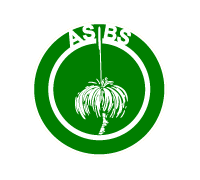
ASBS Newsletter – Book Review
Handbook of the Vascular Plants of Ashmore and Cartier Islands
written by G. D. Pike and G. J. Leach
(From ASBS Newsletter Number 94, March 1998)
Published by: Parks Australia, 1997.
Price: $10.
From: Parks & Wildlife Commission, PO Box 496, Palmerston, NT 0831 (unavailable through Parks Australia)
Islands have long held a particular romantic attraction, and this has 'spilled over' into rational, objective (??) science. It is no accident that volumes 49 and 50 of the Flora of Australia, dealing specifically with 'oceanic islands', were completed early in the series and treated in an insular fashion, as 'stand alone' comprehensive volumes. The islands that have held most fascination have been those with large complex floras. Smaller, variously ephemeral, cays and sand bars have been largely ignored. After all, why bother? They support few plants, nothing remarkably exotic or different, usually a species-poor set of ruderals and introductions.
As far as Ashmore and Cartier are concerned, these remote islands are also largely inaccessible to most Australians, mostly closed to the general public and far closer to Indonesia than to mainland Australia.
Nevertheless, they have considerable biological significance. They support huge numbers of breeding sea birds, many turtles haul out to nest on the beaches, and a particularly rich sea snake fauna has been recorded in the surrounding reefs.
The vascular flora is small and dominated by widespread species, common on tropical coastlines from south-east Asia to northern Australia. In spite of this apparent botanical handicap, this handbook succeeds in sparking interest and leaves the reader with many questions which beg investigation. If the value of a natural history handbook lies in the interest sparked and the research possibilities suggested, then this small publication is particularly valuable and a thoroughly worthwhile 'read'.
The short introduction places the flora in context. The soils data are unfortunately scanty - the dense populations of nesting sea birds and turtles have an obvious and crucial impact on the soil, both chemically and physically (and thus on the local flora). By contrast, the historical account is informative and well places the islands in regional context.
The individual species accounts are impressive. There is a general description, a botanical description, notes on distribution and ecology. Each species is illustrated with a simple, yet useful, line diagram. The few taxonomic difficulties have not been avoided (e.g. Boerhavia spp.). Useful field characters are provided (e.g. the key character distinguishing Spinifex littoreus from Spinifex longifolius is "...leaves able to draw blood" (S. littoreus) vs. "... not sharply pointed" - anyone with any field experience of these grasses will immediately realize how appropriate and practical is this key distinction). The submerged vascular flora is not ignored, but receives the same treatment as the terrestrial component.
Perhaps one of the most interesting sections is the 30 pages devoted to flotsam. Approximately half the species recorded as strand self-introductions are discussed (the remainder not being identifiable to species). Each is illustrated by a diagram of the propagule or other structure likely to be found on the beaches (though it would have been more user-friendly to place these diagrams adjacent to the relevant text).
Typographical errors are remarkably few (consequently, the two grammatical errors on p. 110 stand out). Occasionally the ecological interpretations appear naive, though this may be appropriate in habitats of such recent origin (it is not surprising that a grass "... appears to out-compete other grasses where conditions favour its growth", p. 95 - it is difficult to imagine any plant out-competing another where conditions do not favour its growth). This reader would have appreciated more ecological speculation on the origins of the flora and its future development, following such changes as successful rat control on West Island and decreasing use by fishers from Indonesia.
In short, a thoroughly readable and comprehensive account of the flora of these important islands that passed a personal test of the value of such handbooks - I read it like a novel, rather than scanned it like a field guide.
Reviewer: David Cheal
Parks and Wildlife Commission of the Northern Territory
P.O. Box 496
Palmerston, NT 0831